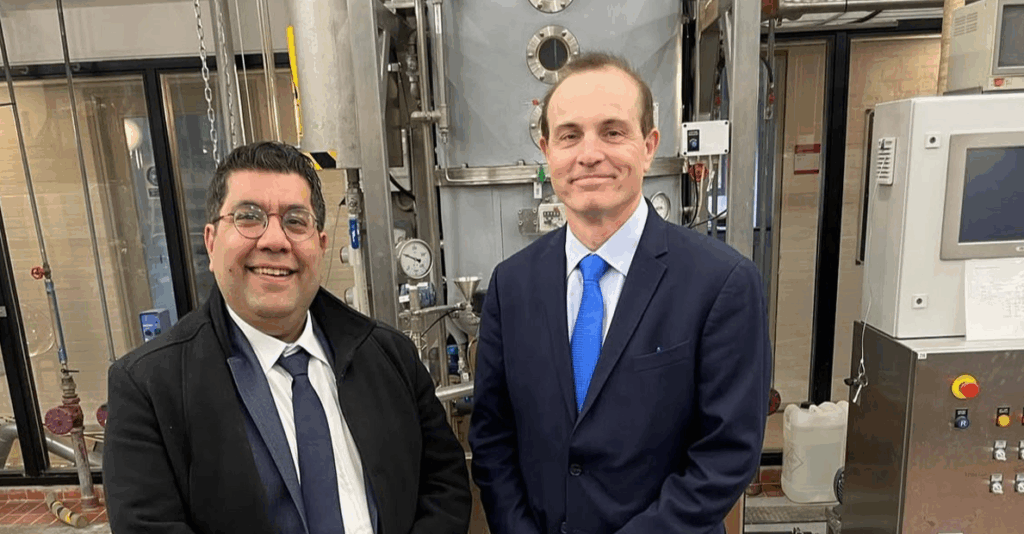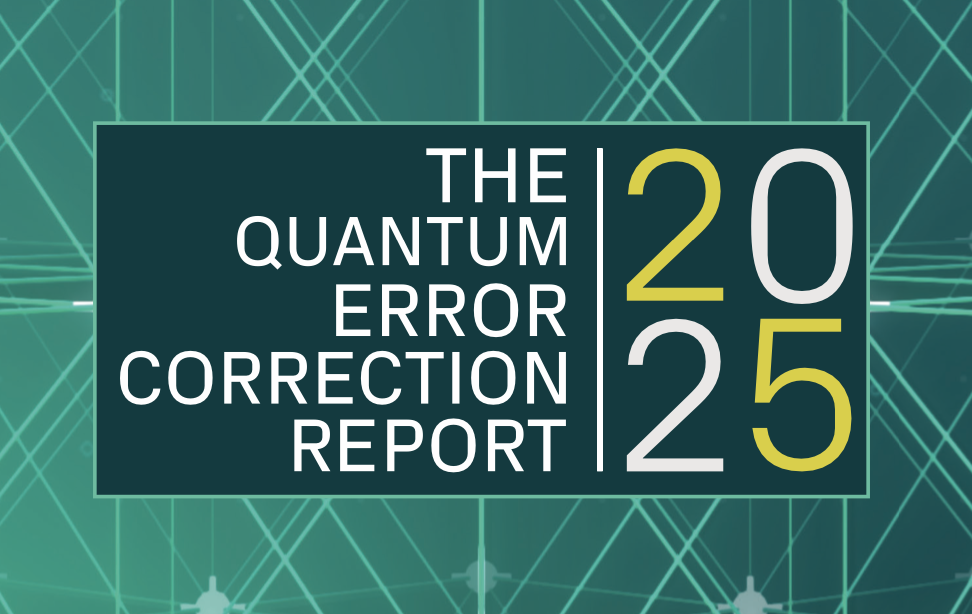2024 saw some dramatic ups, some depressing downs — and then more ups and downs — for the quantum technology industry.
What will 2025 hold for quantum investments? Glad you asked.
Some of the industry’s leading venture capital and investments firms share their predictions for the near-term for this emerging, increasingly more important quantum industry.

Quantonation
Will Zeng, Partner, Quantonation

2024 brought important results in quantum computing: recognition for the rise of neutral atom quantum computers (from Pasqal, QuEra, and Atom Computing), arguably the first utility scale computations, and some of the first prototype demonstrations of quantum error correction and logical qubits. It also brought renewed focus on resource estimation as results from, for example, the DARPA Quantum Benchmarking outlined the large economic impacts that large fault-tolerant quantum computers could have.
In 2025, we expect to see acceleration in these trends as the industry sharpens focus on scaling quantum computers to utility scale. Error correction demonstrations will grow in scope. Architecture will become more important for not just the quantum systems but also the systems that control them. The importance of scalable control electronics drove our investment in QBlox this year as they supply many of the scaling groups.
The industry will also realize that silicon qubits have now emerged onto the main stage with impressive scaling potential. We invested ahead of this in Diraq and Quobly, with Diraq publicly showing performant single and two qubit infidelities with chips made with CMOS processes at a third party foundry.
The emergence of error correction and scaling technologies will cause, over the next few years, a reassessment of approaches not purely based on the who has the best processors today but based on who can build the large, valuable systems of the future.

Caruso Ventures
Dan Caruso, Managing Director of Caruso Ventures
Do you regret sitting on the sidelines four years ago when you had opportunities to invest in AI, missing out on the staggering valuation gains of AI companies in 2024? Are you thinking “I won’t let that happen again?
Or perhaps you did invest in AI four years ago and have reaped in the valuation euphoria–and are now looking for another bite at the apple.
Quantum Tech, which will soon plunge into our world with a forcefulness that will spark another societal revolution, is the next big thing . It will collaborate, not compete, with AI. In 2025, the interplay between Quantum and AI will become clear to those who invest in frontier tech.
Quantum Infrastructure, which offers the opportunity to gain insight into all categories of quantum, is a smart way to invest in 2025. Maybell Quantum and Vescent are prime examples.
Quantum software is another. Superstaq, which is embedded in Infleqtion, is a software platform for quantum applications to interface with quantum hardware.
Getting a head start on Quantum applications is paramount. Quantum won’t be like AI, where everyone has early access to ChatGPT. Users will vie for access to the limited capacity of a small number of the most cutting-edge quantum computers. Those who are most prepared will extract enormous value in the form of drug discovery, material science, or the structuring of stock market transactions.
Quantum Sensing will spur a Quantum Internet of Things that will span across Quantum Time Distribution, Quantum Positioning Systems (QPS), and the discovery of rare minerals on Earth and beyond. Quantum radio frequency (QRF), with its ability to detect minute changes in radio frequency fields with greater precision, will open up new bands of spectrum and unimaginable applications. Infleqtion provides an option to see across the broad spectrum of Quantum Sensing.
When the Internet was first commercialized, it ran on old-fashioned phone networks using copper and circuit switches designed to carry voice. Within its first decade, newly designed networks using fiber and Ethernet violently replaced the old technology. The same will happen with quantum. Quantum communications and networking will enable quantum computers and sensors to connect natively to each other, meaning that information will remain in a quantum state as it traverses networks.
2025 will be a year where investors discover early opportunities to invest in Quantum tech in all categories. Those who do will be most prepared when the Quantum wave hits later in this decade.

Roadrunner Venture Studios
Adam Hammer, CEO and Co-Founder of Roadrunner Venture Studios
Deep tech is already a trillion-dollar opportunity but investment in the sector is not equally distributed. Semiconductors, advanced energy systems, new manufacturing techniques, quantum sciences, and breakthroughs in engineered biology are all poised to create historic market value — to say nothing of the benefits to humankind. Yet venture dollars remain almost exclusively tied up in Silicon Valley, creating a barrier to unleashing this value. Unlike other opportunities, deep tech requires the kind of cutting-edge research and visionary insight that cluster all over the country in labs at universities and government facilities. Artificial Intelligence may continue to emerge out of San Francisco’s “Cerebral Valley” and biotech may still always call Boston and Cambridge home, but the ultimate hotbeds for fusion, additive manufacturing, and quantum computing are still up for grabs. To break down those barriers, founders need a new playbook that speaks to the particular way to build these science-based companies and investors need to look further afield than their traditional fields of vision. The reward will be sizable. I believe one of the next trillion-dollar company could emerge from somewhere like New Brunswick, Gainesville, El Paso, or Albuquerque. Building more clusters of innovation in new places around the country is foundational to American competitiveness and security.

Tensor Ventures
Martin Drdul, General Partner and Founder and Jan Faflik, Senior Associate at Tensor
At Tensor Ventures, we believe that quantum computing is set to revolutionize technology with advancements in three critical areas as we approach 2025: the transition to logical qubits, quantum chemistry breakthroughs, and the maturation of quantum sensing technologies in clinical applications.
From Physical to Logical Qubits
The industry’s move to logical qubits, which mitigate errors through advanced correction protocols, will mark a pivotal moment. Creating many logical qubits requires quantum computing hardware integrating advanced technologies and algorithms while ensuring reliable, scalable, and sustainable computational resources. Our portfolio company, QC82, will play a critical role here, leveraging continuous-variable quantum approaches to design scalable, fault-tolerant systems.
Quantum Chemistry Breakthroughs
With logical qubits enabling precise quantum simulations, quantum chemistry will unlock new opportunities in material science, pharmaceutical formulation, and organic synthesis. Here, we primarily expect that classical AI will significantly reduce the computing ineffectiveness of hybrid-quantum approaches in chemical simulations, and more general-purpose, highly transferable artificial intelligence – quantum mechanical methods will be developed.
Quantum Sensing in Clinical Trials
Quantum sensing technologies are entering clinical trials, offering unprecedented sensitivity for early disease detection, including conditions like cancer and neurodegenerative diseases. In 2024, the NIHR’s horizon scan of emerging quantum technologies in healthcare from the UK identified 166 quantum health technologies in development across 32 clinical trials. Once some early results from the trials are available, we expect more activity in the space to ramp up.

Serendipity Capital
By Robert Jesudason, CEO and Founder, Serendipity Capital
“It was the best of times, it was the worst of times, it was the age of wisdom, it was the age of foolishness, it was the epoch of belief, it was the epoch of incredulity, it was the season of light, it was the season of darkness, it was the spring of hope, it was the winter of despair.” Charles Dickens
Although, this week can definitely be characterised as a “mini ChatGPT” moment given the announcements from Quantinuum and Google, in 18 months we will look back and see this was when the industry bifurcated. Most notably, Quantinuum’s announcement of creating the largest ever entangled GHZ state of 50 logical qubits has established a clear global leader. The cutting edge of quantum computing has seen a notable acceleration in the pace of development. Recent demonstrations of logical qubits – including impressive results by Google, QuEra/Harvard, Quantinuum, and Atom Computing – have demonstrated a credible pathway to fault tolerant quantum computing.
These companies, along with a handful of others (including but not limited to Amazon and IBM) have separated themselves as leaders in a top tier of integrated hardware players, distinguished by substantial capital, technological maturity, and roadmaps to utility-scale machines. Below the top tier is a second tier of established full stack hardware companies, including IonQ, IQM, Pasqal and Xanadu, who need to achieve certain breakthroughs to reach the top tier.
Over the last decade, much of the narrative in Quantum has been about building and growing an ecosystem of companies. That was more important than individual winners. This was valid, as the industry engaged and raised more money from Government and the private sector built their own interest and capability to invest in the Industry. Private sector capital has flowed into the industry, increasing from $0.4bn in 2019 to $1.9bn in 2024. There is much to celebrate.
However, there is a long tail of companies that generally have little differentiation and face real challenges to survive long-term. With hundreds of quantum computing companies and startups active, most still need to find a sustainable position and demonstrate their value. The harsh reality is that many will fail, which will beckon a wave of consolidation. Governments’ have also started to move beyond supporting local ecosystems, with Australia’s investment in PsiQuantum and Singapore’s announced MOU with Quantinuum are examples of more deliberate partnerships. We expect this to accelerate over the next 2-3 years.
That said, opportunities remain in key areas. Companies developing specialized for critical parts of the stack are finding success. Riverlane’s advances in error correction and the control hardware advancements from Quantum Machines and Qblox are salient examples.
The message for investors, policymakers, and participants is clear: quantum computing is maturing, but it requires substantial capital and expertise to reach fault tolerance and utility scale. Incremental capital and funding should be allocated to the technological leaders rather than being spread thinly across a fragmented ecosystem.

MFV Partners
Karthee Madasamy, Founder & Managing Partner at MFV Partners
Quantum computing is coming into a place in 2025 where AI was, say, 5 years ago. For a very long time before its breakthrough, many people questioned the feasibility of AI. However, in the background, researchers and companies on the front lines of AI were making exponential growth, year-over-year, on algorithms. Eventually, the hardware and computing power came along to meet with that progress, and everything aligned for it to take off. In quantum computing, we’re seeing that same exponential growth in addressing the significant barriers to large-scale quantum, which are errors and instability. Each year, we’re getting more qubits on quantum computers in development, and we’re also finding ways – through approaches like photonic quantum and quantum error correction – to make quantum computers more resilient. We’ll be just breaking into the early innings of quantum over the next 12-24 months, and it’s really needed as we’re getting to the end of Moore’s Law with classical computing. Quantum is one of the few answers to help us meet skyrocketing computation needs.

Quantum Coast Capital
2025 Prediction: Building the Quantum Ecosystem for Long-Term Growth and Impact
| Matthew Cimaglia, Founder, Managing Partner, Quantum Coast Capital |
The past five years have marked an extraordinary era of progress in quantum technology, with signals pointing to a rapidly evolving market. Milestones once considered distant goals are now being achieved at an accelerated pace. In 2024 alone, we saw companies surpass expectations and deliver breakthroughs ahead of schedule, signaling that quantum technology is transitioning from theoretical potential to tangible, real-world solutions.
As we enter 2025, quantum computing is poised to capture growing public and institutional attention. The transition from a niche scientific pursuit to practical applications with significant economic and societal implications will define this next phase. Industries such as logistics, finance, healthcare, and cybersecurity are on the brink of leveraging quantum-driven advancements that could reshape their operations. From optimizing supply chains to modeling climate change with unprecedented precision, the impact of quantum technology will be profound and far-reaching.
Yet with growing excitement comes the necessity for prudent planning and a long-term vision. It is crucial to view quantum not as a speculative bubble but as a transformative ecosystem that requires sustainable growth. The lessons learned from past technology cycles remind us that the most enduring innovations are those built on thoughtful investment and collaborative development. This applies not only to companies in the quantum space but also to the institutions, governments, and investors working to support its evolution.
2025 will also be a year of international collaboration and recognition, highlighted by the United Nations International Year of Quantum Technologies. This milestone underscores the increasing global acknowledgment of quantum’s potential to influence economies, national security, and scientific progress. Collaboration between governments, academic institutions, and private enterprises will be paramount in ensuring quantum reaches its full potential as a cornerstone of future innovation.
While the road ahead is filled with opportunity, it also requires navigating challenges responsibly. The quantum field must address questions of scalability, security, and accessibility to ensure its benefits are shared widely and equitably. The years ahead will demand a balance between ambition and pragmatism, with stakeholders across sectors working together to unlock quantum’s potential in a way that is both impactful and enduring.
As 2025 approaches, it is clear that we are entering a pivotal era for quantum technology. The next phase will not only define the trajectory of the industry but will also set the stage for its integration into the global economy. This is an exciting moment—one that calls for bold thinking and collaborative action to ensure quantum becomes a lasting force for progress.
















